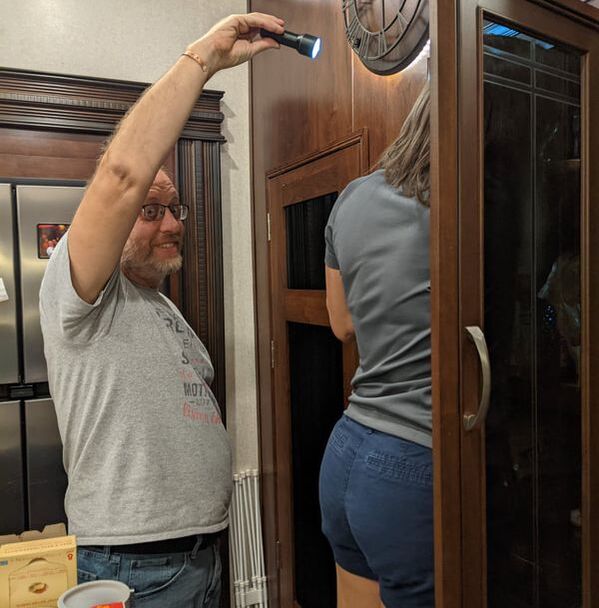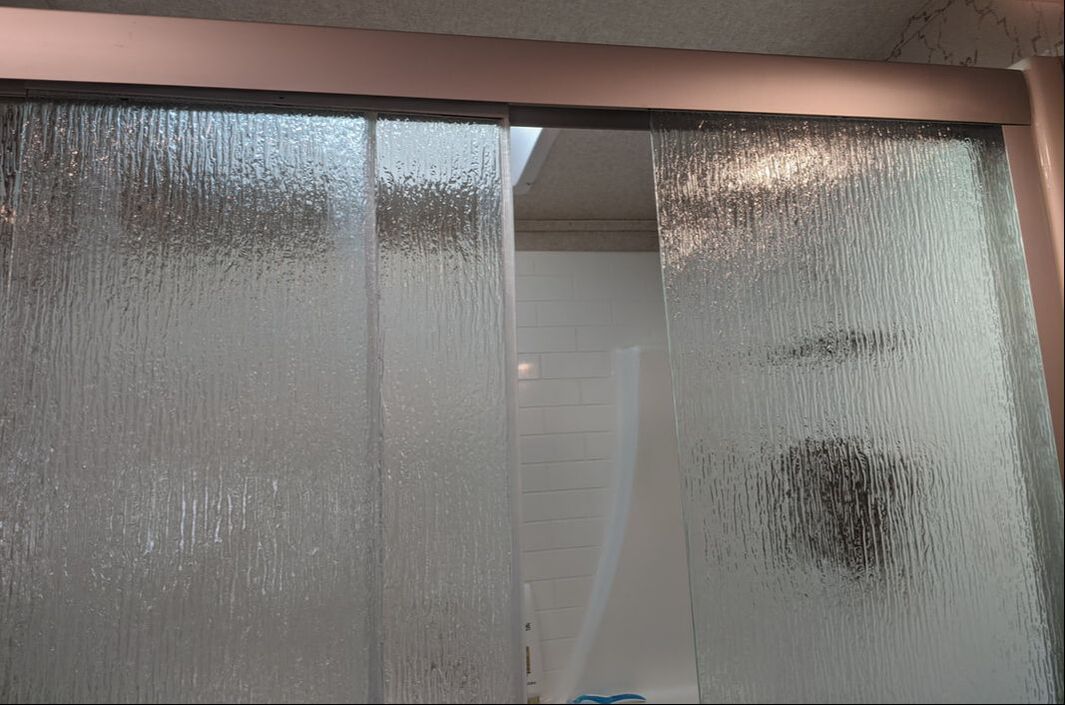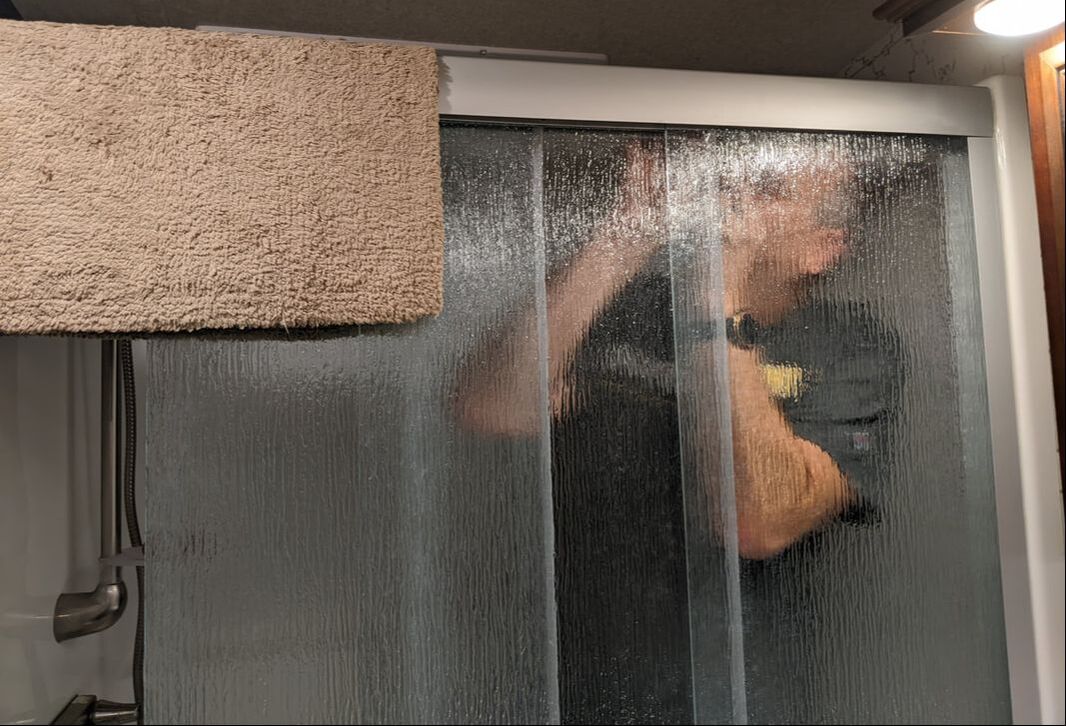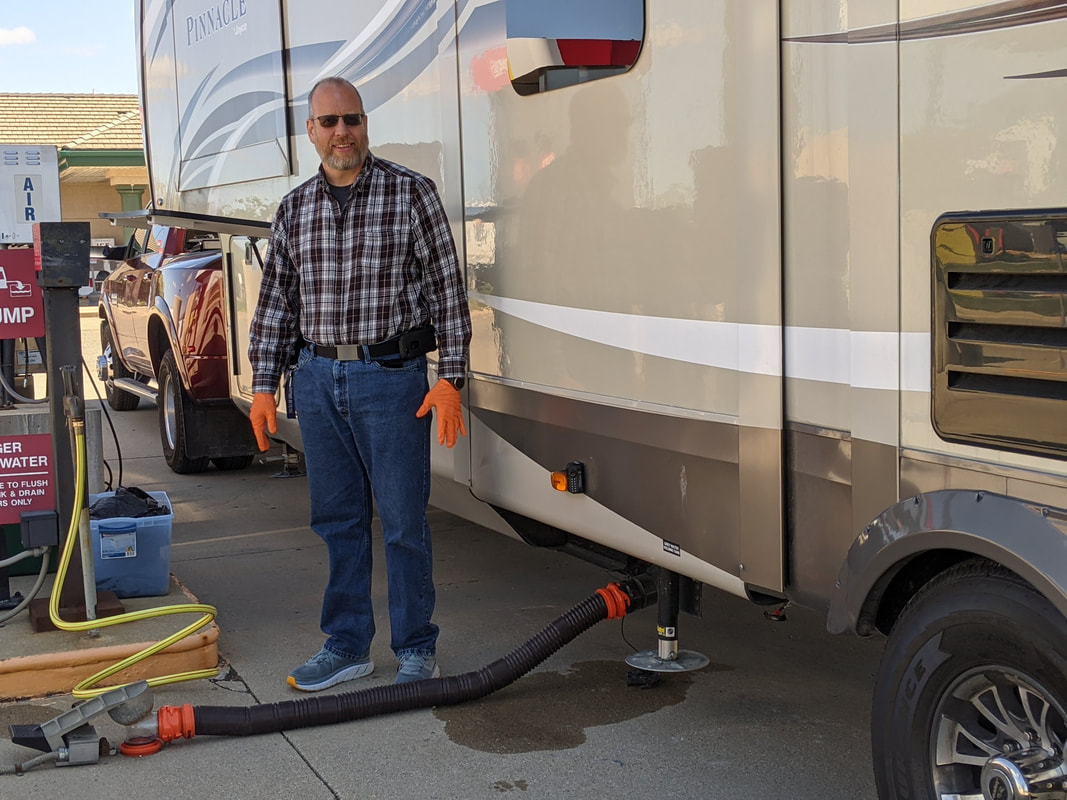|
The lockdowns brought on by the pandemic inspired people to purchase RVs and explore America as a way to get out of their homes. Many of these people probably had visions of grandeur, parking next to lakes and overlooking beautiful canyons. Those images, although nice, are not the norm of RV living. True full-time RV life is much dirtier. Although Bob and I do get to meet people from all over the continent, visit places we haven’t seen before, and capture amazing sunrises and sunsets, there’s much more to RV life that isn’t as attractive — or exciting. Arriving at a location may end a day of travel, but it can take two to three hours to park in a campsite, depending on a number of factors: levelness (or lack thereof) of the ground, angle and layout of the site, the driver’s experience, and a whole lot more. Here, we explore some of the not-so-pleasant parts of RV living. Things Get Lost We lose things more often than we’d like to admit. With only 400 square feet of living space, you wouldn’t think that would be the case. But because we have so many areas to store things, we don’t always remember where we put them. We may know we kept them, but finding their hiding place is another thing altogether. For example, we knew we had a bag of dried chili peppers somewhere. Bob wanted to use them in cooking, but we couldn’t find them. Our pantry is nearly two feet deep and just over a foot wide, featuring three shelves to which we’ve added levels. We often lose things in there. All of our food storage doesn’t fit in the pantry, so we have food stored in other cabinets in the rig too. Determining where to search for food items is only part of the battle. We did find the chili peppers, but it took me standing on a stool with my head inside the pantry while Bob shone a flashlight to help me see its contents. Mysterious Things Happen Because road travel causes a lot of vibrations, Tagalong essentially experiences a series of earthquakes every time we relocate. These vibrations can jar screws loose and cause other issues. Oftentimes, screws appear from nowhere — even after we’ve been set up for a while. Then we have to figure out where the screws came from so we can reattach them. One day after I got out of the shower, a screw appeared on the counter. Naturally, I assumed it came from the sliding glass shower door, but I couldn’t easily identify its source. We set the screw aside and didn’t notice any abnormal or faulty shower door operations until a whole week later. I attempted to slide the three-paneled door from one end of the shower to the other and noticed a huge gap. That screw attached two of the shower door panels together. Bob attempted to reattach the screw while I held a flashlight for him, but his fingers had very little leverage in the ½-inch slot. We had to order a new tool designed specifically for tight spaces to tighten the screw properly. Limited Wastewater Capacity
When you live in a home in a city like we did for 24 years, you don’t think twice about where your waste goes when you flush the toilet. When you live in an RV, however, that thought is often on your mind. Waste collection tanks have limited capacity. After nearly two years living in our fifth wheel, we know our black tank can last about two weeks with just the two of us using the toilet. After that, it needs to be emptied. If we’re staying in a campground with sewer hookups, that’s not a problem. We typically connect our sewer hose to the drain upon arrival at the campground. To empty the black (toilet) and gray (sink and shower) tanks, we simply exit the rig, pull a lever, and dump the contents. But that’s not the end. Then we have to close that lever and deposit some sort of chemical or probiotic into the toilet to mitigate odor and break up what will become the new contents in the tank. If we’re boondocking or staying somewhere without sewer hookups, we physically have to move the rig in order to dump the tanks. Many RVers carry a portable waste tank with them that allows them to empty part of the contents of their black and gray tanks into it to transfer to a dump station. But stopping the flow of wastewater isn’t always an easy endeavor.
3 Comments
Gene K. Baxter
1/8/2022 01:07:51 pm
Thanks, Lana, for the reality check. As we read your blogs, we readily enjoy - along with you - all the new fantastic sights and adventures you experience, but we rarely think about all the minor inconveniences you also experience. Thanks for sharing your adventures as well as the reality exposures. May God bless you both with many more exciting and new adventures, but with a minimum of unexpected inconveniences. Best regards, Gene
Reply
Ray Cole
1/8/2022 03:48:54 pm
Changed my mind. I can't bear the thought of losing dried peppers.
Reply
Jan
1/12/2022 03:23:43 pm
Fun times!!!
Reply
Leave a Reply. |
AuthorThis is the travel blog of full-time RVers Bob and Lana Gates and our truck, Gulliver, and fifth wheel, Tagalong. Categories
All
Archives
July 2024
|




 RSS Feed
RSS Feed